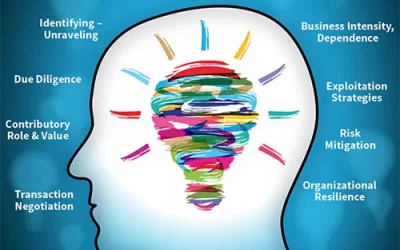Michael D. Moberly June 9, 2009
Strategic planning is about articulating a clear and practical vision about where a company ‘wants to be’ at some future point in time. Strategic plans also describe the necessary ‘action steps’ insofar as identifying the resources required to execute and achieve the plan’s goals and vision.
Far too often however, company strategic planning falls short on two fronts, (1,) it overlooks the role, contributions, and ways intangible assets can be used/leveraged to facilitate – enable achieving the goals, objectives, and vision set forth in the plan, and (2.) it tends to focus on a company’s ‘tangible assets’ while overlooking the underlying (foundational) value and contributions produced by intangible assets which are likely already embedded in various processes, procedures, and human – intellectual capital.
Management teams are remiss to deny or dismiss the relevance of intangible assets to a company’s strategic planning process today, particularly in light of:
1. the economic fact that steadily rising percentages, as much as 65+%, of most company’s value, sources of revenue, sustainability, and future wealth creation lie in – are directly linked to intangible assets, i.e., intellectual property, proprietary information/know how, competitive advantages, trade secrets, goodwill, image, brand, etc.
2. The Sarbanes-Oxley Act and FASB (141, 142), which, for publicly traded company’s, elevates intangible assets to legal – fiduciary responsibilities.
An initial (useful) step to enable-facilitate intangible assets being integrated in a company’s strategic planning, is to conduct an ‘intangible asset assessment’ which is a methodical, company specific process to (1.) identify relevant intangible assets, (2.) unravel them to assess their stability, fragility, and sustainability, (3.) put in place practices/procedures to sustain (protect, preserve) their control, use, and ownership, and (4.) position and leverage them to extract value! Ultimately, an intangible asset assessment brings much needed insight (and, business, economic, competitive advantage) clarity to a company’s intangibles!



